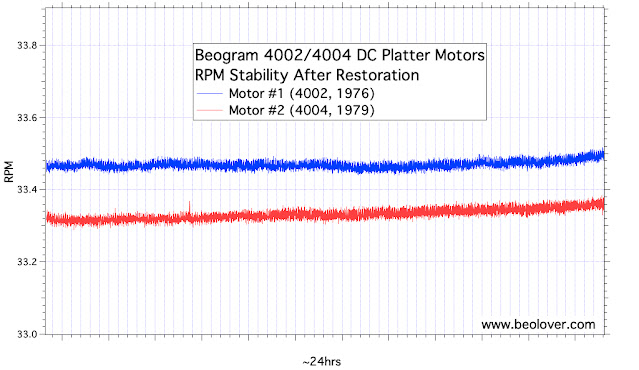I recently received two DC platter motors from a Beogram 4002 and a 4004 for restoration. As in most cases these two motors had dry bearings causing RPM variations.
This shows the two motors as received:
A look at the bottom plates of the sound proofing enclosures revealed the manufacturing dates:
The 1976 motor is from a Beogram 4002, while the 1979 dated motor is from a 4004. They are almost identical in construction, except that the younger motor has a white plastic brush carrier in comparison to the brown FR-2 PCB material of the earlier design. This shows the 1976 motor taken apart to get the bearings out. They are on the small black pad upfront:
After immersing the bearings in motor oil and pulling a vacuum strong bubbling occurred as the air was drawn from the porous Oilite bearing material:
I did the same for the 1979 motor. After about three days the bubbling stopped for both of the bearing sets, indicating completion of the oil re-infusion process. I extracted the bearings from the oil
and re-assembled the motors. Then I installed each of them in one of my Beogram 4002s and tested them with the BeoloverRPM device, which can log the RPM in 10s intervals for extended periods of time:
This graph shows the two RPM curves that I measured over about 24 hrs for each motors:
The red curve corresponds to the 1979 4004 motor, while the blue curve (shifted for clarity) was measured for the 1976 4002 motor. Both curves are pretty similar and show the usual, probably temperature related, long term drift and some minor wiggles as the shafts polish the reoriented bearings.
These motors are ready for business again!







No comments:
Post a Comment
Comments and suggestions are welcome!